Anyone who has spent much time on this website or has met me will know about my near-obsession on monitoring power usage on Motorhomes and Campervans!
There are various options and levels available …
The Victron range of BMVs are very popular and if you bring in a central ‘brain’ like the Cerbo GX you have a very capable monitoring solution – but at a fairly significant cost. And something Victron doesn’t have is the ability to monitor multiple selected circuits. It is possible to use a BMV Battery Monitor as a power monitor, but when the smallest unit is a 500 Amp Shunt unit, it is rather overkill, even without considering the price.
Simarine, an Slovenian Company, have a very neat Monitoring system in their Pico Blue set, with a Display Monitor, a high current Battery Monitoring Shunt and a smaller 4-channel Shunt that you can use for individual circuits. This solution can be a little more cost-effective than a full Victron setup, but is really for “point-in-time” monitoring and does not give the kind of historical data that Victron can provide.
Both Victron and Pico can, if the vehicle (or boat) has access to on-board Wi-Fi, be accessible via the Internet anywhere in the world and this ability can be a very powerful reason to go for one of these options despite the price.
There are stand-alone lower-cost Monitors, such as the Alii Monitor, which come in 350A, 100A and 50A versions, but they are very much a Battery Monitor and nothing else really. They are also just “point-in-time” devices with no historical information stored and this instantaneous information only visible using the display. So a way to save money, but rather limited in their function.
The new option?
There is a new range of Monitoring Devices that have been developed by a company called “The Monitor of Things”. This is the BatMon range of shunts, which come in a 300A and a 500A size, for use when monitoring Battery Banks which have higher current loads such as Inverters, power chargers or large solar arrays, and a 30A size shunt which is ideal for the more ‘everyday’ circuits like Fridges, Lighting Circuits or the like.
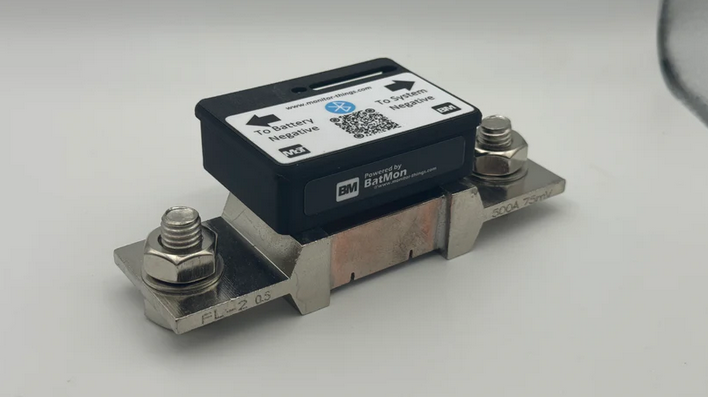
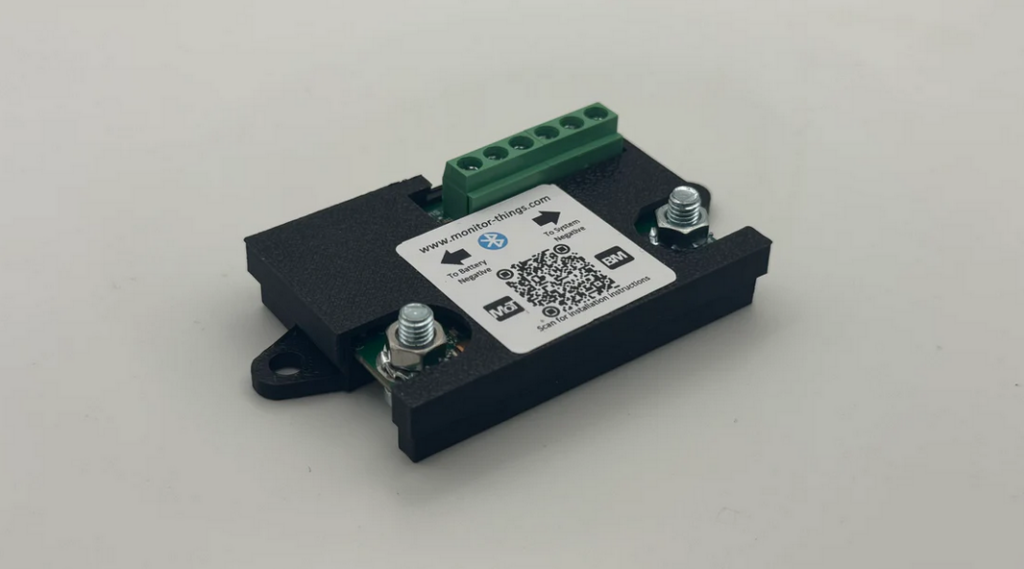
The pictures on the left show the 300A BatMon (the 500A is identical except the shunt is a little larger) and the 30A BatMon.
The Bluetooth Module is integrated on the unit
These shunts are accessible via an Smartphone App and up to seven BatMon devices can be monitored together. They also log power usage on a constant basis and store this on the device. The data can then be viewed on a graph directly on the App, or downloaded as a CSV file via email for further analysis.
I have installed a few of the BatMon units on my own Motorhome to see how they work in my setup. One thing I was interested in was just how much power my regular Monitoring system actually used when monitoring the power, so I fitted BatMons to a couple of key circuits. The following is a couple of charts showing data from the BatMon units….
WiFi Router and Raspberry Pi
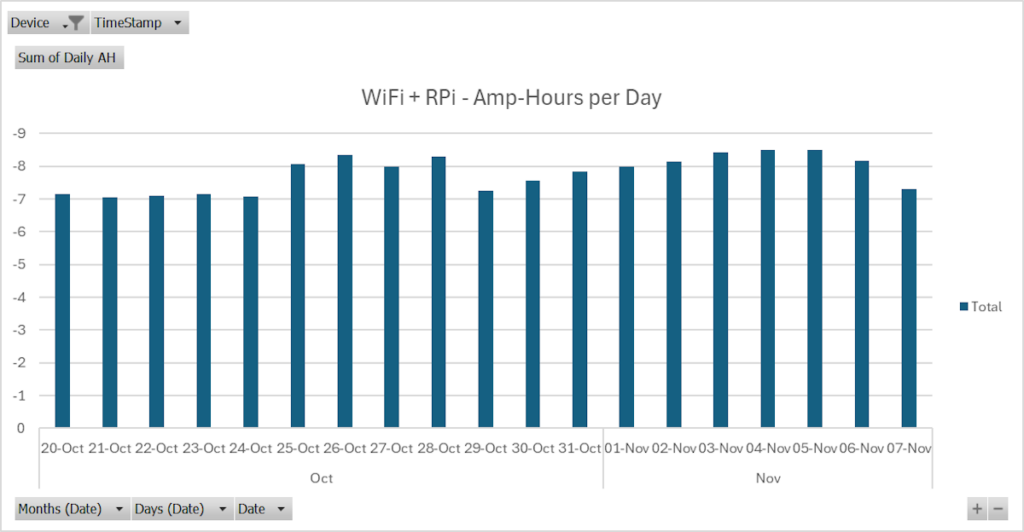
This chart was created using the comprehensive information downloadable from the BatMon Unit via the Smartphone App.
I used the data to get a view of the Amp Hours used per day and this shows that having an Raspberry Pi (I use this for running an program called ‘Home Assistant’) plus an always-on in-Motorhome Wi-Fi system (in my case, an Avtex AMR985 System) uses over 50Ah per week. There is not a massive difference per day.
Cerbo GX
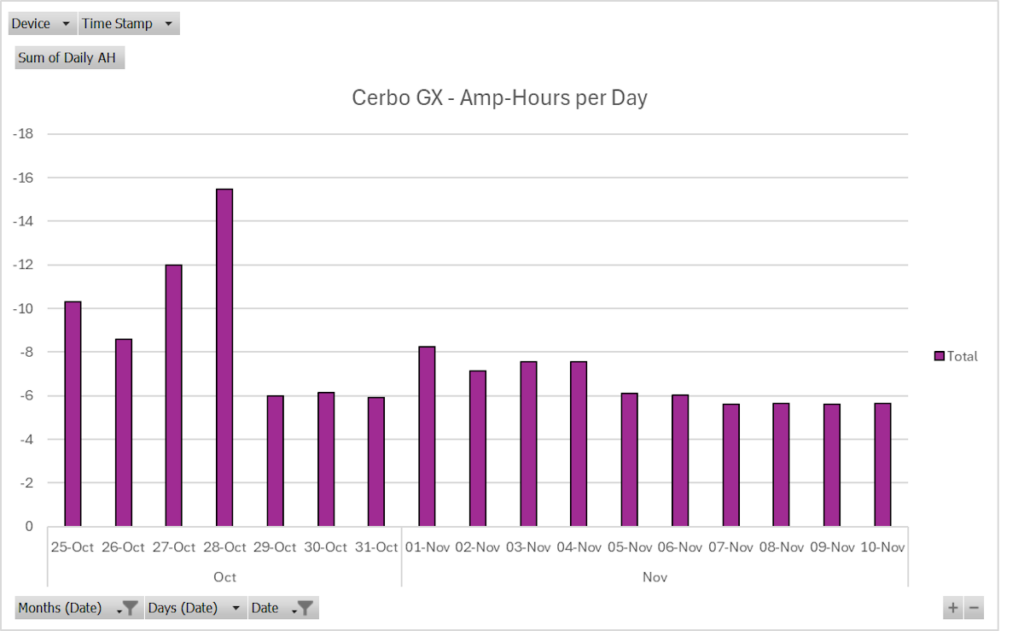
This chart was again created using the comprehensive information downloadable from the BatMon Unit via the Smartphone App.
In this case, it is the power used by the Victron Cerbo GX which is the monitoring ‘heart’ of my Victron electrics system. Compared to the earlier chart, there is a lot more varience on certain days and those days I recall are when I was doing some updates to the Cerbo GX firmware.
The first four days recorded in October it was more active and so used more power due to these updates, and I would say the value of approx 6Ah per day is likely more typical on a day-to-day indication of power consumption. The key benefit of the BatMon unit is that the real life on-going power usage can be activately accessed very easily and doesn’t need a ‘finger in the air’ approach but real data can be obtained.
BatMon Application Screens
Below are some screenshots of the BatMon App to show what it looks like. For a full view, visiting their website at Monitor of Things will give the most up to date information (there may well also be updates and enhancements made after this blog page is posted).
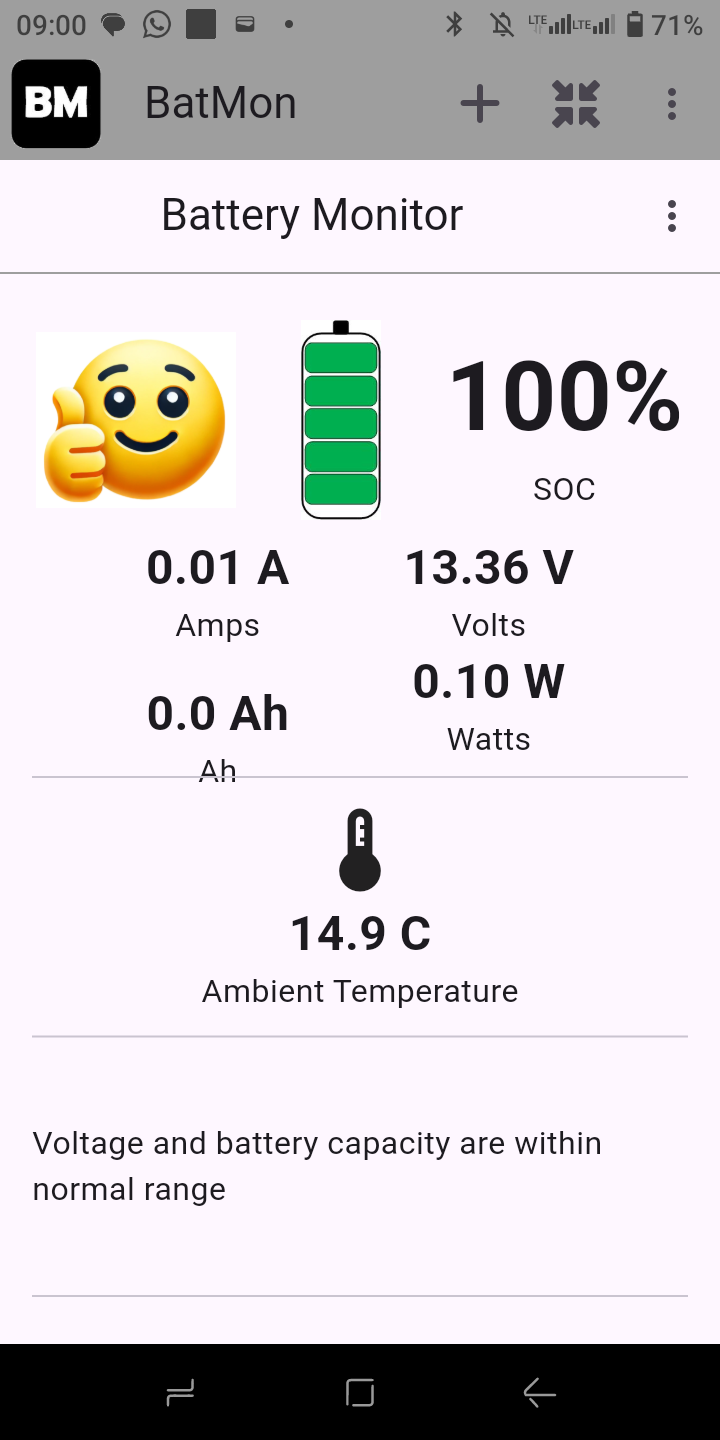
This screenshot on the left shows a BatMon Unit configured as a Battery Monitor.
This tells the user the Battery State of Charge (far more accurate than trying to use a voltage to determine how much battery is left!) as well as the instantaneous position regarding Current, Voltage and Power.
The right hand side Screenshot shows the Phone App speaking to the BatMon that is monitoring the Motorhome WiFi router and Raspberry Pi SBC and from where the usage data was gathered, using the ability to send a .CSV file via email direct from the App.
This shows info for a point in time – in this case looking at the Amphours used over a week, but you can select current, voltage or temperature as well if wanted.
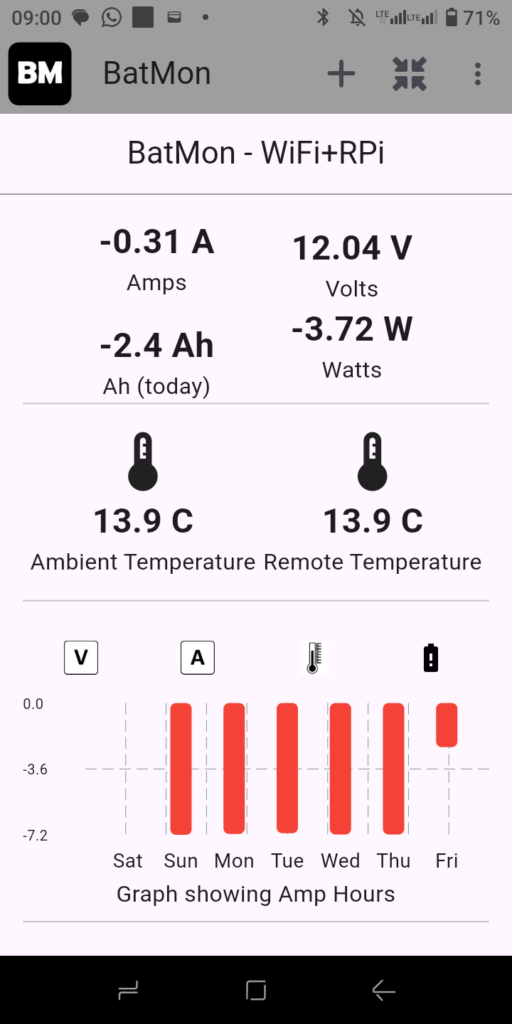
Conclusion
This is not really a conclusion as my use of the BatMon units is still very new and I am thinking of new uses and options for these devices so will likely be expanding on this subject. I have to say seeing the power use of the WiFi and the Cerbo GX was quite a revelation and I did not think either used quite as much power. Having this data can be very useful in shaping how you use what is very often limited power in a Leisure Vehicle.
If you are interested in getting a BatMon setup for yourself or just one to try out, check out the Wildebus shop where you can buy either the 30A or the 300A Units – see here – https://wildebus.com/product-category/manufacturers/monitor-of-things/ .
If you buy from us, we will be happy to try and assist with any questions on the units. The units are also of course available direct from the Monitor of Things (see previous website link posted earlier).
